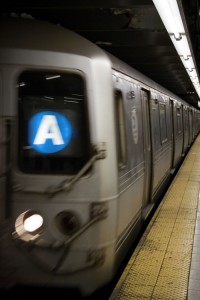Carl Zimmer writes in the New York Times of scientists using the city as laboratory, examing the evolutionary changes wrought by the necessities of urban life. An excerpt:
“To study evolution, Jason Munshi-South has tracked elephants in central Africa and proboscis monkeys in the wilds of Borneo. But for his most recent expedition, he took the A train.
Dr. Munshi-South and two graduate students, Paolo Cocco and Stephen Harris, climbed out of the 168th Street station lugging backpacks and a plastic crate full of scales, Ziploc bags, clipboards, rulers and tarps. They walked east to the entrance of Highbridge Park, where they met Ellen Pehek, a senior ecologist in the New York City Parks and Recreation Department. The four researchers entered the park, made their way past a basketball game and turned off the paved path into a ravine.
They worked their way down the steep slope, past schist boulders, bent pieces of rebar, oaks and maples, hunks of concrete and freakish poison ivy plants with leaves the size of a man’s hands. The ravine flattened out at the edge of Harlem River Drive. The scientists walked north along a guardrail contorted by years of car crashes before plunging back into the forest to reach their field site.
‘We get police called on us a lot,’ said Dr. Munshi-South, an assistant professor at Baruch College. ‘Sometimes with guns drawn.’
Dr. Munshi-South has joined the ranks of a small but growing number of field biologists who study urban evolution — not the rise and fall of skyscrapers and neighborhoods, but the biological changes that cities bring to the wildlife that inhabits them. For these scientists, the New York metropolitan region is one great laboratory.”
Tags: Carl Zimmer, Jason Munshi-South

